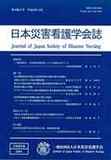Japanese
English
- 有料閲覧
- Abstract 文献概要
- 参考文献 Reference
要約
目的:本研究の目的は東日本大震災前の東京都災害拠点病院産科棟における震災時の備えについての実態を明らかにすることである。
方法:対象は東京都災害拠点病院のうち分娩の取扱いのある産科棟の防災管理者である。2010年11月〜2011年1月に自記式調査票により震災への備えとして計画、訓練、備蓄についてそれぞれ尋ねた。分析方法は、選択式による回答のデータを記述統計で算出し、自由記載のデータは内容ごとに分類した。
結果:21施設から回答があった(有効回答率41.1%)。9割以上の施設が産科棟独自の災害対策マニュアルがあり、産科棟独自で防災訓練を実施していた。災害時に分娩を想定した訓練をしている施設は2施設のみであった。産婦用の新生児避難グッズ、トラウベ等を準備している施設は、4割の施設であった。また、周産期ユニットおよび病院内での連携の取り方が課題として挙げられた。
結論:東京都災害拠点病院の産科棟では、独自のマニュアルの整備や訓練が行われていた。産科棟に必要な物品が十分に備蓄されていないことがわかった。
Objective: To clarify the preparedness of maternity wards in Tokyo's disaster base hospitals before the Great East Japan Earthquake.
Methods: This study used self-report questionnaires to survey disaster protection managers of maternity wards between November 2010 and January 2011. Questionnaires, which were distributed via postal mail, examined the preparedness of the wards in terms of planning, training, and supplies. Key descriptive statistics were calculated and the content of open-ended descriptions was categorized.
Results: Twenty-one (41.1%) valid responses were analyzed. Of the 21 wards, over 90% possessed maternity-specific disaster manuals and had trained staff in maternity-specific disaster programs; however, only two hospitals had simulated deliveries in their training. In 40% of the wards, neonatal escape equipment for mothers and Pinard stethoscopes were in stock. Cooperation within maternity and neonatal units, and that with other wards is an issue that needs to be addressed in the future.
Conclusion: Most maternity wards in Tokyo's disaster base hospitals possess ed maternity-specific disaster manuals and training; however, problems were caused by inadequate stock of disaster management equipment.
Copyright © 2016, Japan Society of Disaster Nursing All rights reserved.


